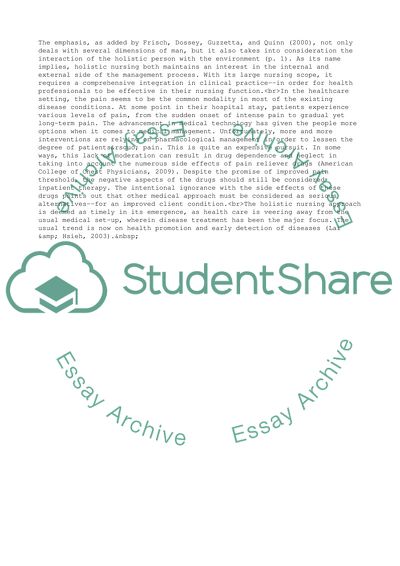Cite this document
(Pain Management: A Holistic Nursing Approach Research Paper, n.d.)
Pain Management: A Holistic Nursing Approach Research Paper. Retrieved from https://studentshare.org/management/1742968-how-holistic-nursing-practices-can-decrease-pain-in-patients
Pain Management: A Holistic Nursing Approach Research Paper. Retrieved from https://studentshare.org/management/1742968-how-holistic-nursing-practices-can-decrease-pain-in-patients
(Pain Management: A Holistic Nursing Approach Research Paper)
Pain Management: A Holistic Nursing Approach Research Paper. https://studentshare.org/management/1742968-how-holistic-nursing-practices-can-decrease-pain-in-patients.
Pain Management: A Holistic Nursing Approach Research Paper. https://studentshare.org/management/1742968-how-holistic-nursing-practices-can-decrease-pain-in-patients.
“Pain Management: A Holistic Nursing Approach Research Paper”, n.d. https://studentshare.org/management/1742968-how-holistic-nursing-practices-can-decrease-pain-in-patients.


